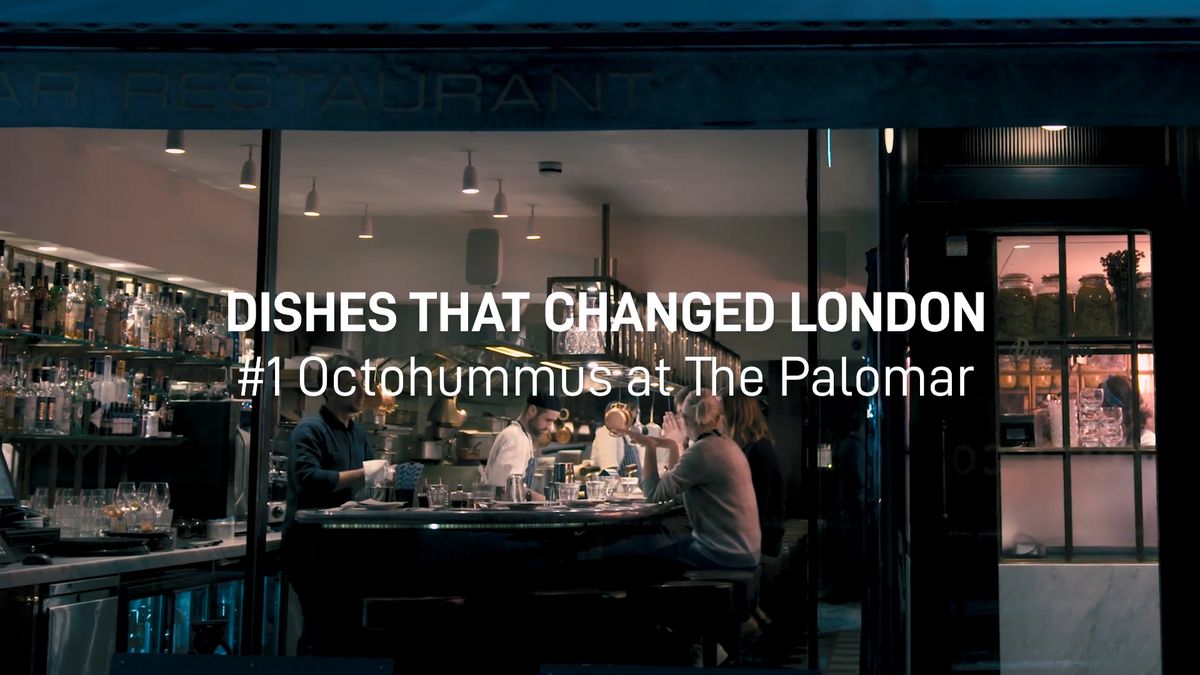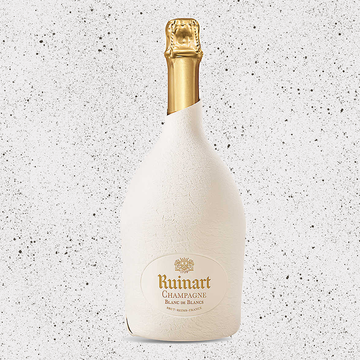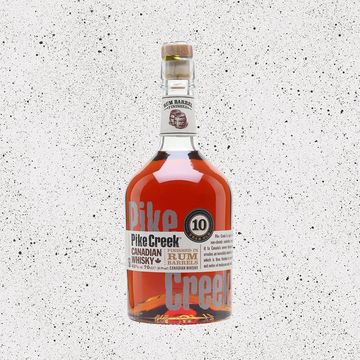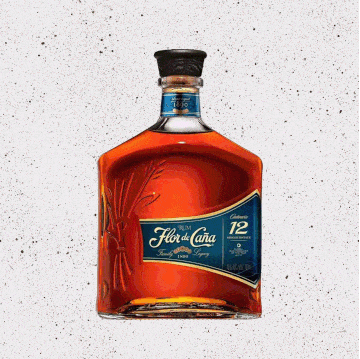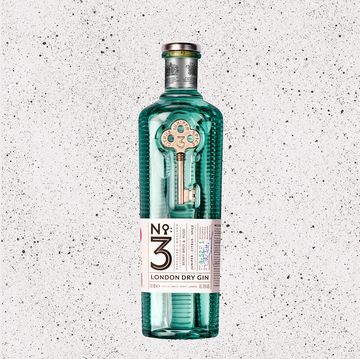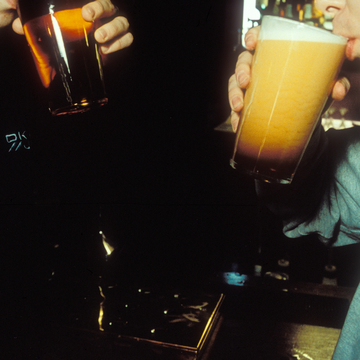On a cocktail list, you expect to find a few surprises. Maybe a drink will include an unusual culinary ingredient like cheese, which you never considered mixing into a glass, or a spirit you haven't tasted yet, like sotol, a Mexican cousin of tequila. Trying new ingredients can open your mind (and palate) to innovative ideas, which is usually highly encouraged. But keep in mind that bartenders are not food scientists or pharmacists; not every exciting item in their arsenal today is necessarily safe to drink in excess. (Then again, neither is alcohol.) Whether these items are banned by the Food and Drug Administration, unsanitary, or flat out illegal, here are seven trendy cocktail ingredients of which you should be wary.
Activated Charcoal
Bartenders are now spooning food-grade activated charcoal—yes, powdered carbon—into drinks to give them a jet-black hue. This pharmaceutic ingredient first caught on in the health and beauty industry, where green juice devotees swore by its detoxification properties. Juice company LuliTonix, for example, sells an activated charcoal elixir called Black Magic that supposedly helps the body "extract and neutralize… heavy metals, toxins, poisons and other chemicals that we don't want loitering around inside us."
That part is true: In the medical community, activated charcoal is used to treat poisoning. According to a report from the National Institutes of Health, you can swallow activated charcoal in an emergency situation to help "prevent the poison from being absorbed from the stomach into the body." It can also prevent drugs such as prescription medication and supplements from being absorbed into your body, which can seriously screw up your dosage. Other side effects of consuming activated charcoal include abdominal pain, constipation, bowel obstruction, and black stool. Thirsty yet?
Molly Wellmann, owner of Japp's in Cincinnati, says she refuses to use activated charcoal in drinks. "It hasn't been tested to know what it is really doing in your body, and it tastes metallic," she says. "If I want to make something a black color, I use bakers' food coloring." The NIH report warns that activated charcoal "can be dangerous if it is not used correctly" and recommends that you "call a poison control center for advice" before ingesting it.
Tobacco
Many people combine drinking alcohol with smoking cigarettes. But when tobacco shows up in a cocktail, it can make for a risky combo. Tobacco syrups, tinctures, and bitters are widely used at bars all over the country. Most of the time, these ingredients are house-made. To make a tobacco syrup, for example, a bartender will typically buy pipe tobacco from a cigar shop, dunk it in a warm sugar syrup, and let it steep. Once the syrup reaches a flavor profile the bartender likes, he or she removes the leaves and stirs it into a cocktail for a distinct, smoky flavor and aroma.
While these bartenders may be mixing up drinks that taste good, none of them know how much nicotine is in each batch. The next time you see tobacco syrup on a menu, ask to taste it straight. It will make the back of your throat tingle, and if a batch is particularly potent, it could cause nicotine poisoning.
"If anyone is telling you that their tobacco syrup isn't dangerous, either there's no actual tobacco in it, or they're lying to you," says Justin Elliott, owner of the Townsend in Austin. "There is no truly safe homemade tobacco tincture." Technically, selling alcoholic drinks that include nicotine is not even legal in bars. The bar would need to hold a retail tobacco license in addition to its liquor license for this to be above board. This regulation, however, is rarely, if ever, enforced.
Tonka Beans
Tonka beans last made headlines a decade ago, when the Food and Drug Administration busted Chicago restaurant Alinea for using the illegal ingredient in its kitchen. The FDA has banned the South American legume from U.S. stomachs since 1954, when the department deemed its main chemical compound, coumarin, toxic in high doses. Swallowing 250 servings at once, about 30 beans, can damage your liver and kidneys.
Many chefs and bartenders, however, consider the FDA regulation to be antiquated. Cinnamon, after all, is also toxic in extreme doses. And, they argue, they are only using a little bit at a time. They buy the beans online and then shave a few slivers over food, imparting a unique, vanilla-cinnamon-almond flavor on it, or infuse them into syrups to use in warm, tropical cocktails.
Tyson Buhler, head bartender at Death & Co in Denver and New York, says he avoids risky cocktail ingredients like tonka beans altogether. "There are still so many applications of what we have in front of us that we don't feel the need to explore things that may be harmful to our guests," he says. "We're also trying to please as many palates as possible on a given night, and while we always are sure to have a few outliers on the menu for those looking to try something very unique, I don't see the need to add any risk. There's just so much to work with!"
Tonic Water
The primary flavoring agent in tonic water is quinine, an ancient anti-malaria drug. Today bartenders have access to quinine's mother plant, bark from the cinchona tree, and use it to make their own homemade tonic water. But as you would guess, playing around with anti-malaria drugs can have accidental consequences. "Homemade tonics have been quite the rage for a while now, but quinine extraction can be a really uneven thing," Elliott says. "There have been a number of cases of cinchonism (quinine overdose, basically) tied to this."
Cinchonism, according to the NIH, can cause rashes, ringing of the ears, and even blindness. Avery Glasser, co-founder of Bittermens bitter company in New Orleans, said in 2014 that he and his partner, Janet, once contracted cinchonism after drinking an incorrectly made gin and tonic. "By the amount of the suspended cinchona dust floating in the drink and the distinctive earthy tannins that mark incomplete filtration, we should have stopped drinking it at the first sip," he wrote on Facebook. "But we didn't, and spent the next two days dealing with the very uncomfortable symptoms."
Tonic water made with quinine from cinchona bark is more prone to overdose, as it is difficult for bartenders (who are not food scientists) to measure its power. "Ethanol is an incredibly potent extraction agent," Elliott says. "But it also lends itself to some really dangerous situations when it comes to dosing with these 'medicinal' plants. And don't count on some rediscovered, 19th-century apothecary's ledger or some hippie at the 'natural' store to understand the potential dangers of these ingredients, either."
Liquid Nitrogen or Dry Ice
In 2012, an 18-year-old woman had to have her stomach removed after drinking a Jäger cocktail chilled with liquid nitrogen. Drinking the extremely cold element—liquid nitrogen clocks in at -321 degrees Fahrenheit—caused cryogenic burns to her organ and perforated its lining. But despite its obvious risks, liquid nitrogen and another similar product, dry ice, are still used to add novelty to drinks.
Liquid nitrogen and dry ice (solid carbon dioxide) produce similar effects on drinks: They quickly freeze ingredients and chill glasses, giving off a steamy fog look. The elements require special equipment to handle, but are harmless once evaporated. If you don't let them fully evaporate before trying to suck down a drink, however, you could cause frostbite to your gastrointestinal tract. To avoid injury to guests, some bars opt for putting dry ice into protective capsules, which prevents it from touching your mouth.
"The name of the game is hospitality, and not to get all Hippocratic, but I think 'first do no harm' is certainly a pretty great baseline when considering what we want to serve our guests," Elliott says.
Oxidised Components
In addition to the individual ingredients used in drinks, bartenders are also distrustful of some preparation methods. Wellmann is not comfortable drinking or serving barrel-aged cocktails, which could collect bacteria as they sit. "I realize that there is alcohol in there to kill stuff, but I just don't like the idea of oxidation," she says. "I like cocktails to be fresh. I'm really particular about that. I don't want to risk harming anyone."
Natasha David, owner of Nitecap in New York, has a similar concern about fat-washed cocktails. "I'm always cautious when infusing booze with fats, especially animal fats like bacon," she says. "It can absolutely be done, but the product must be stored correctly [to prevent bacteria growth and spoilage]." David says accountability is key. "It is vital that bartenders understand their responsibility," she says. "And on the flip side, it is vital that guests can trust their bartenders."


